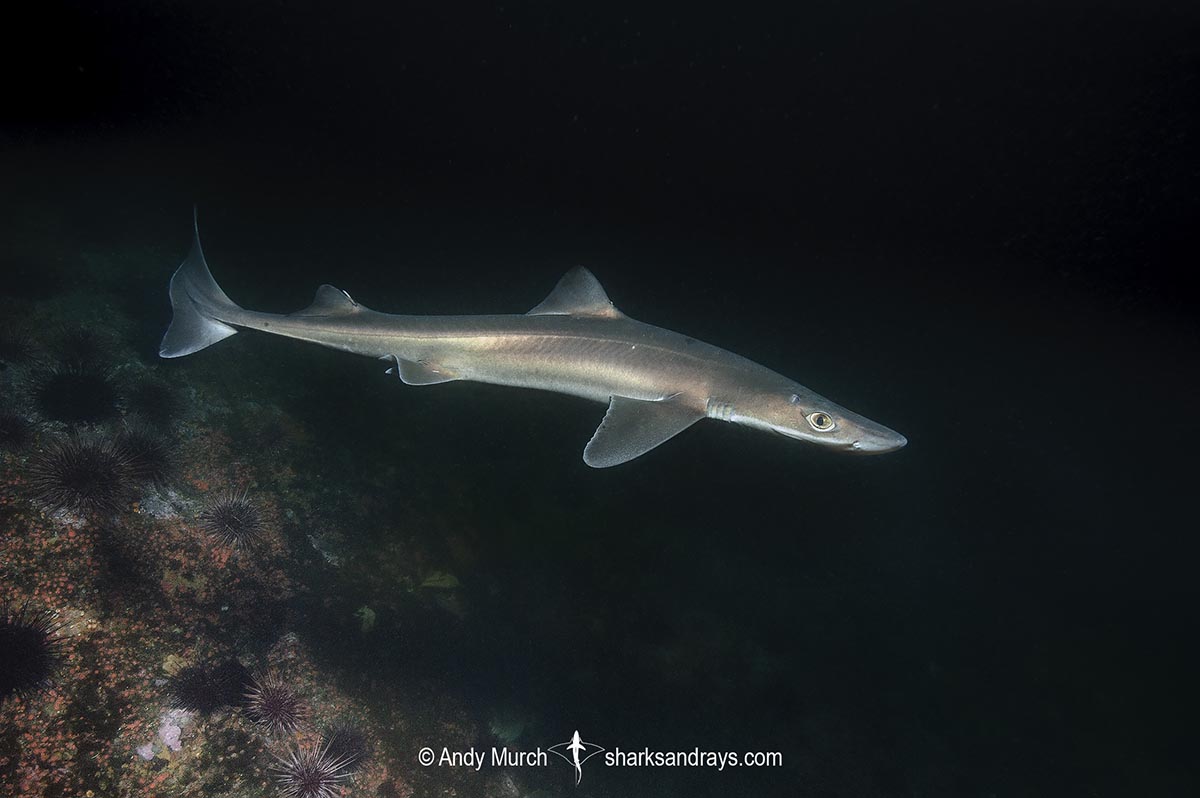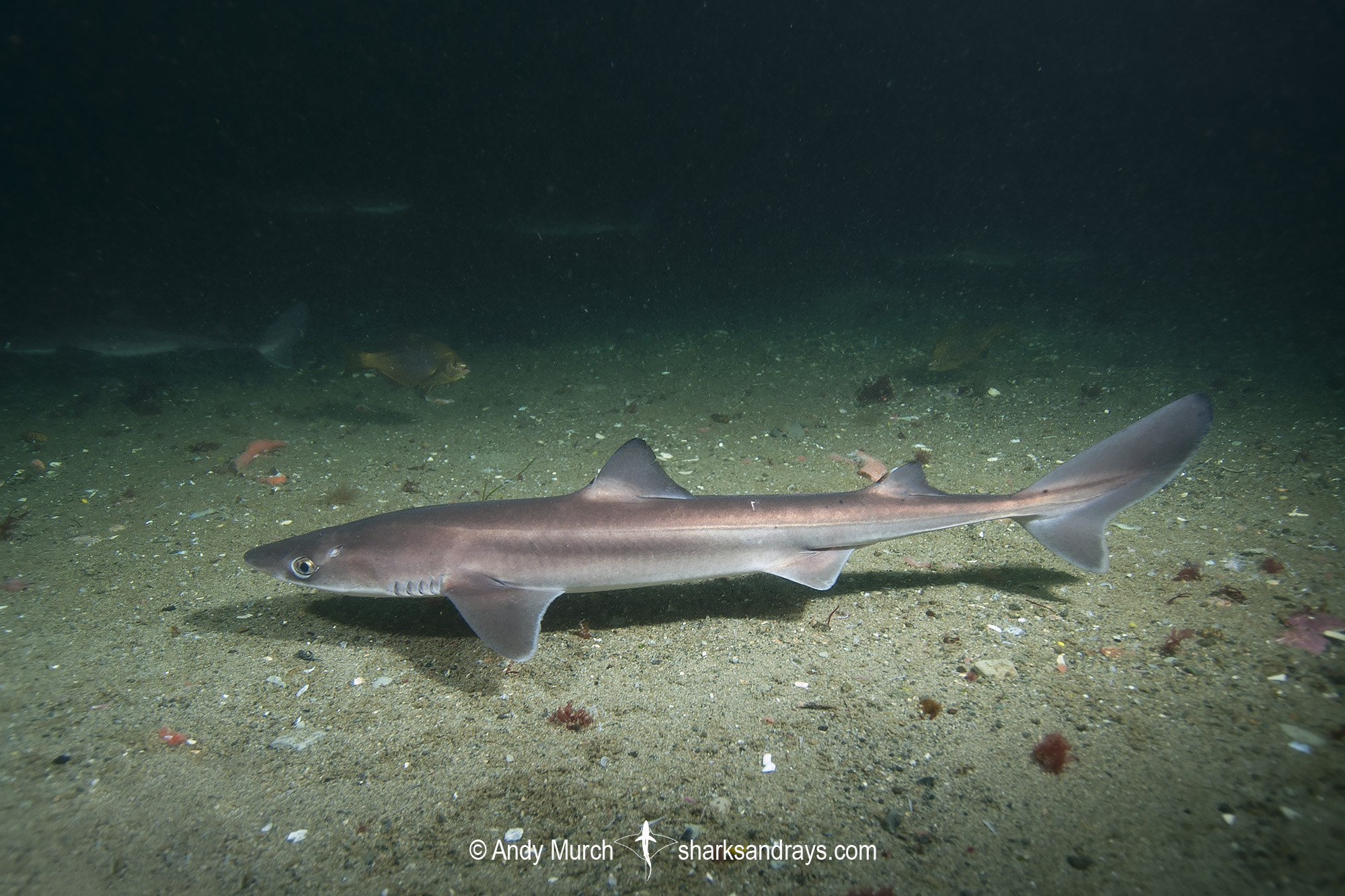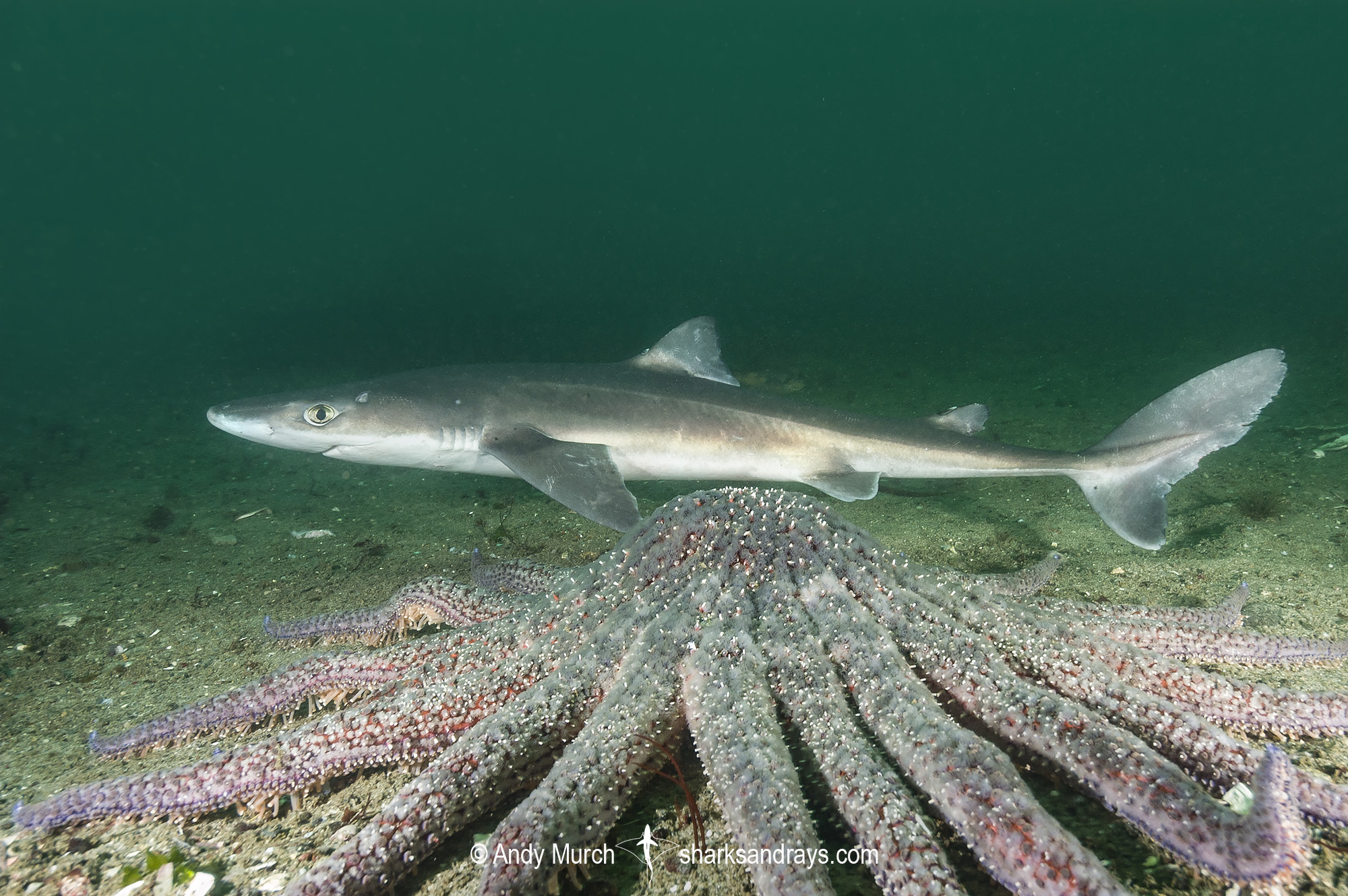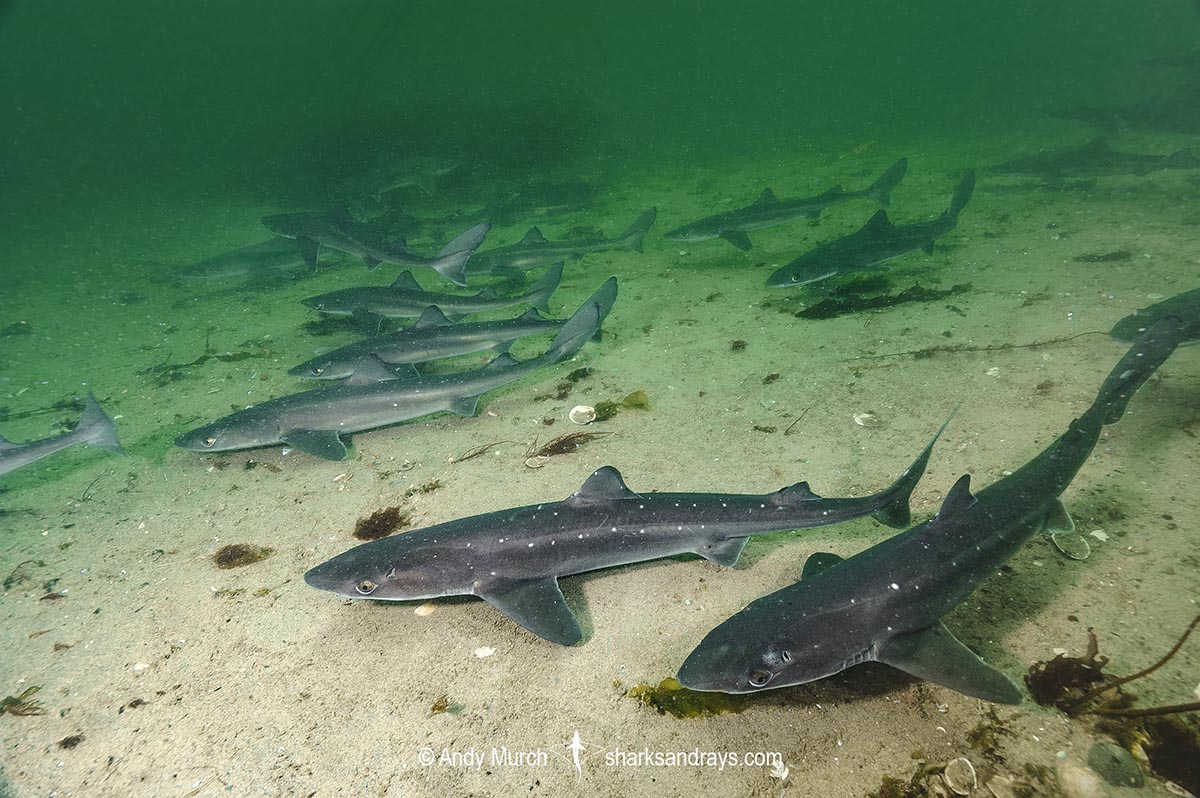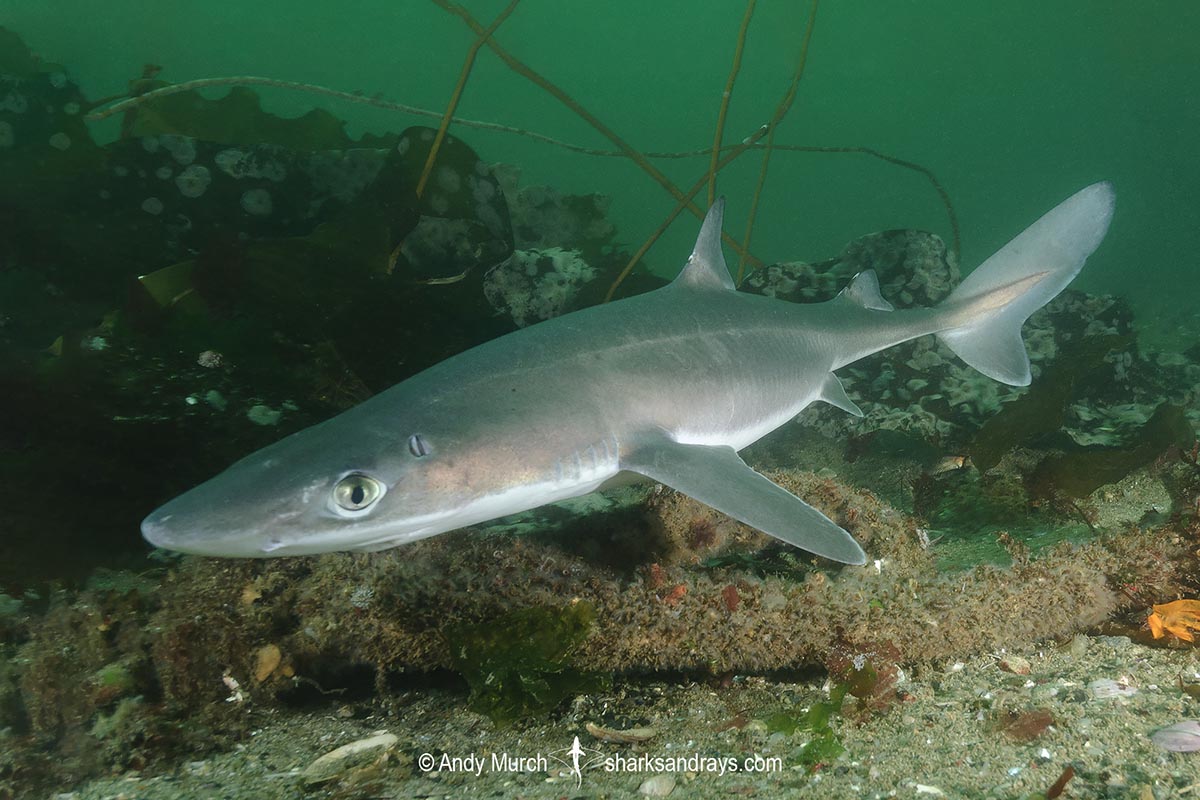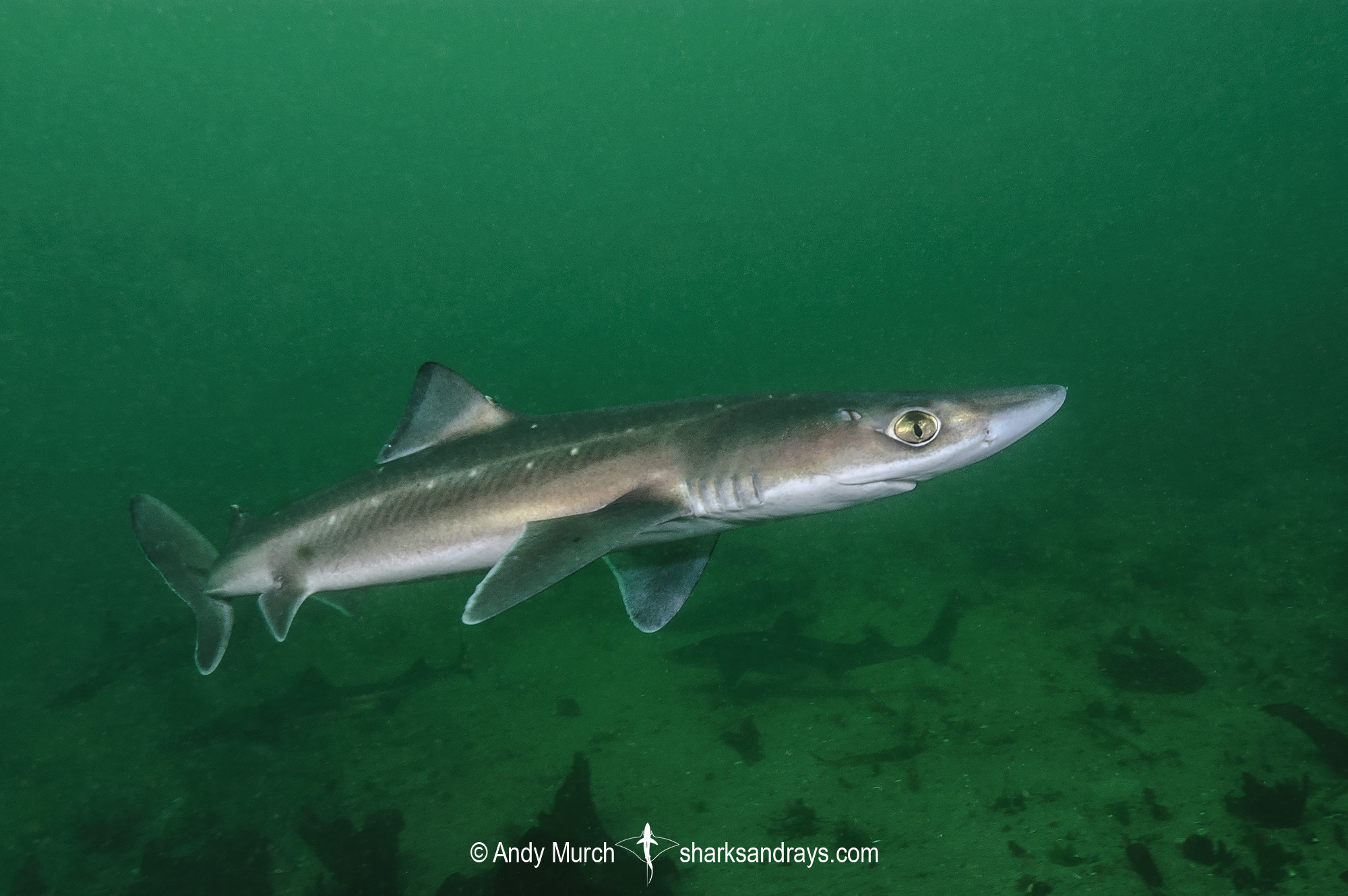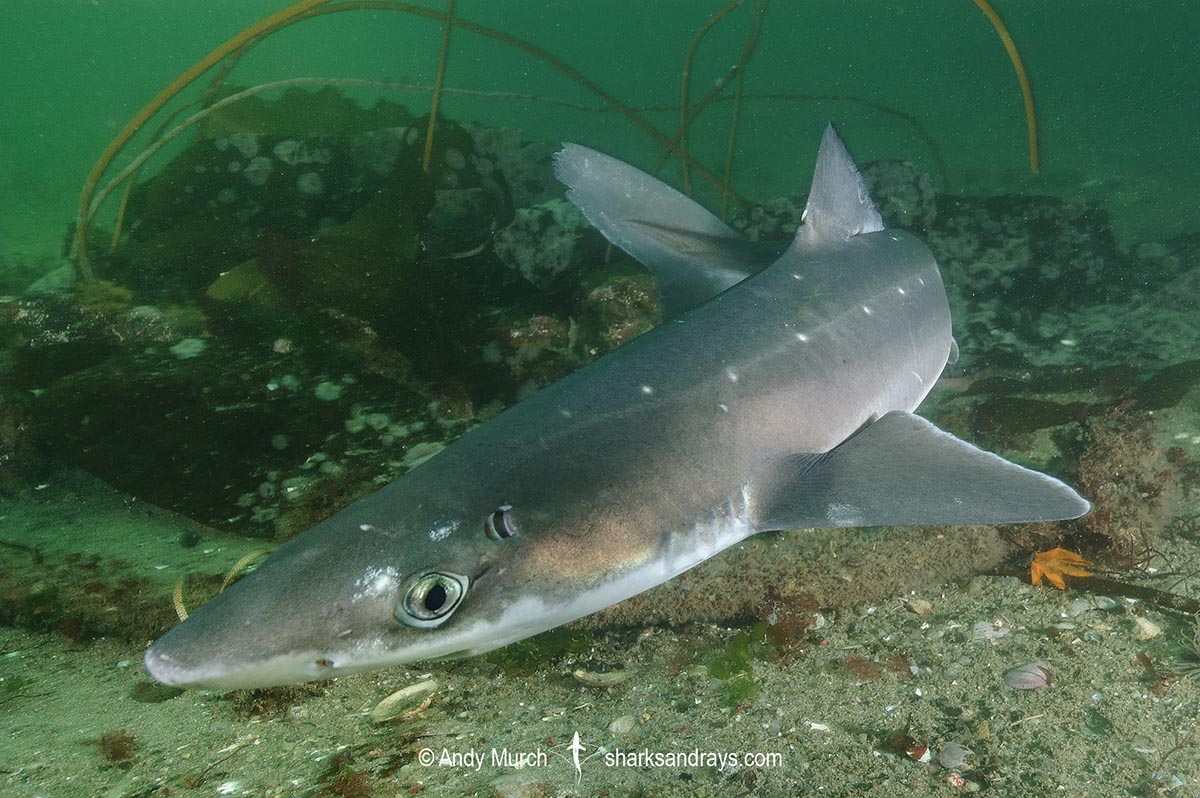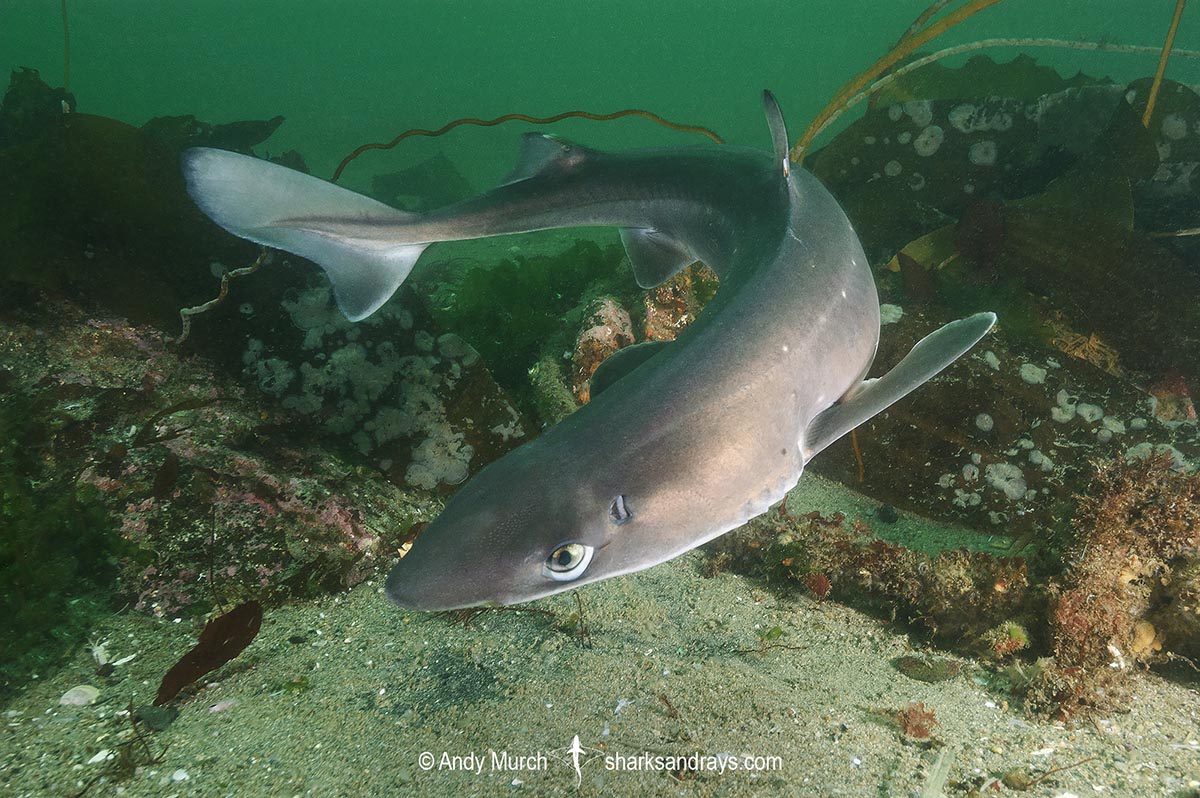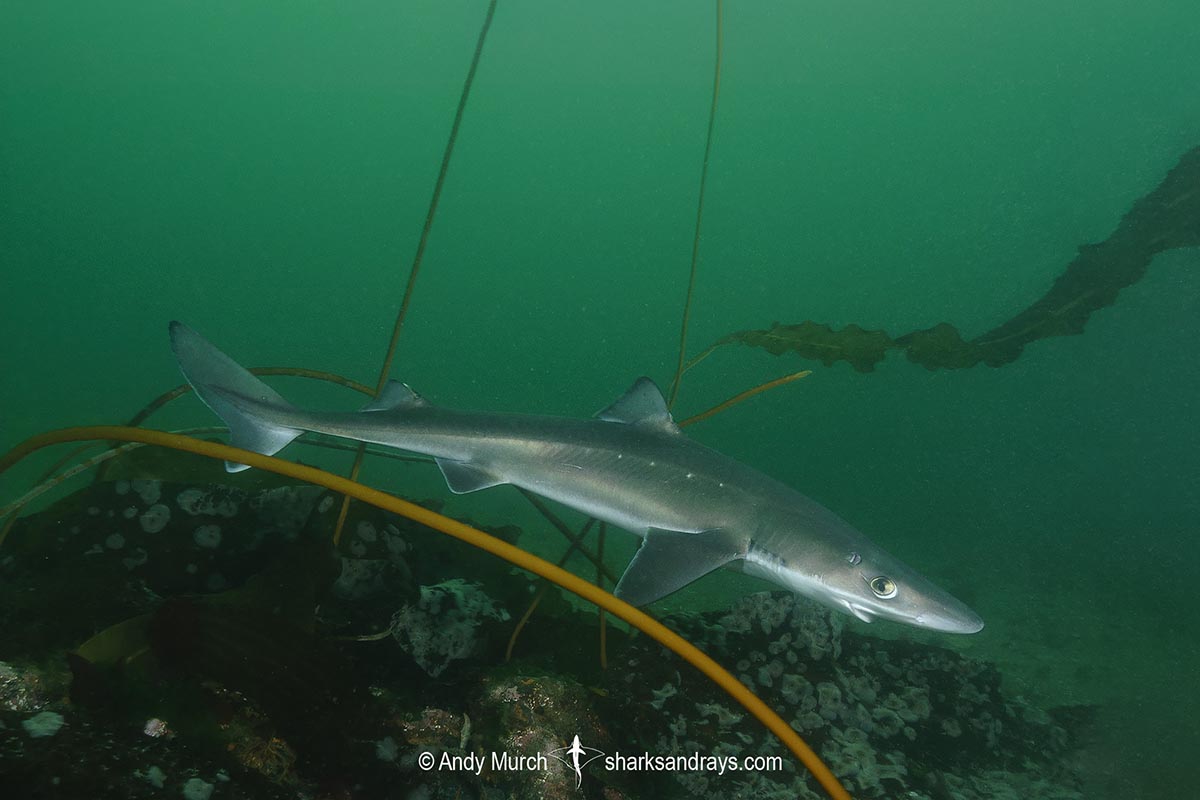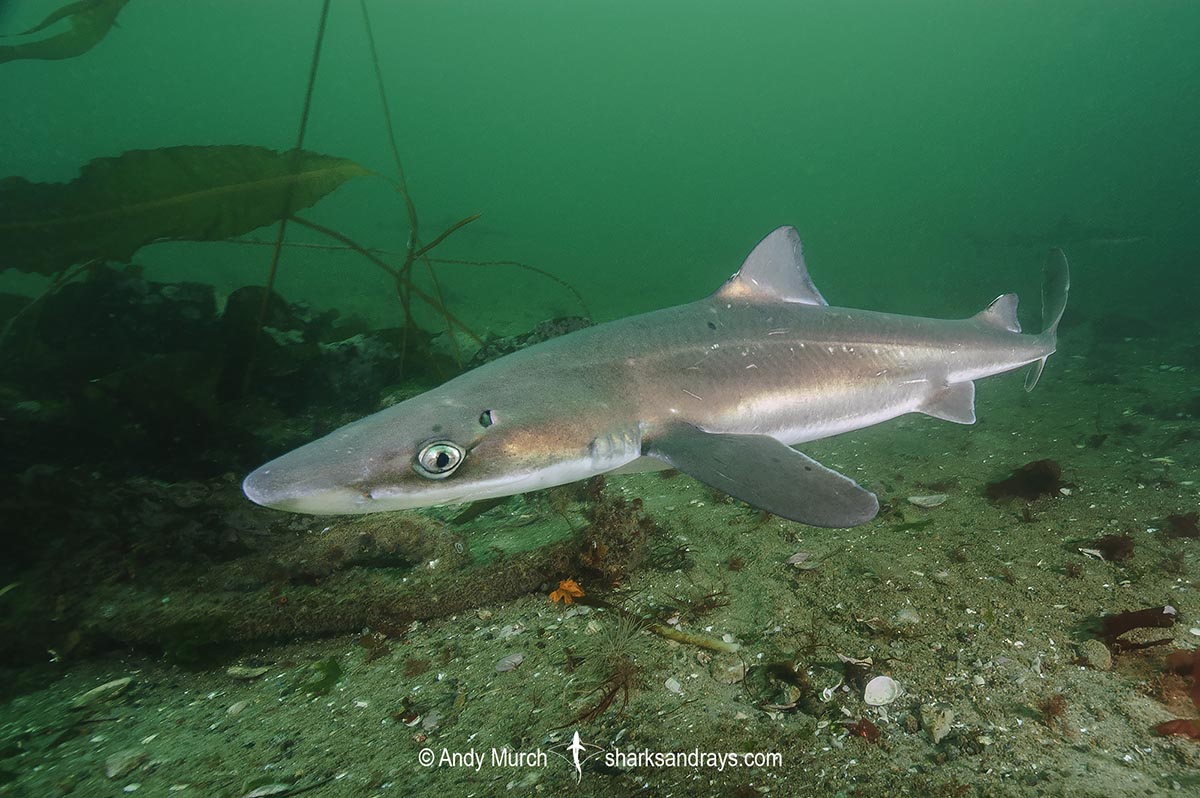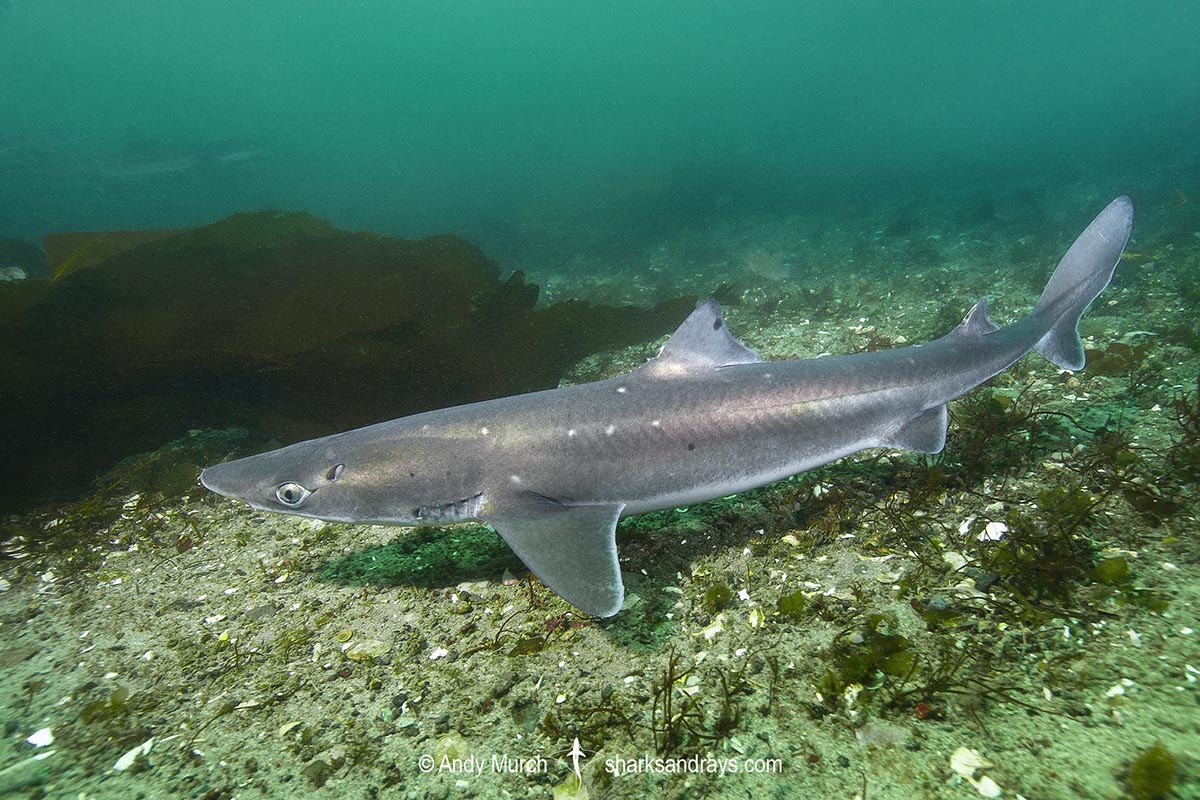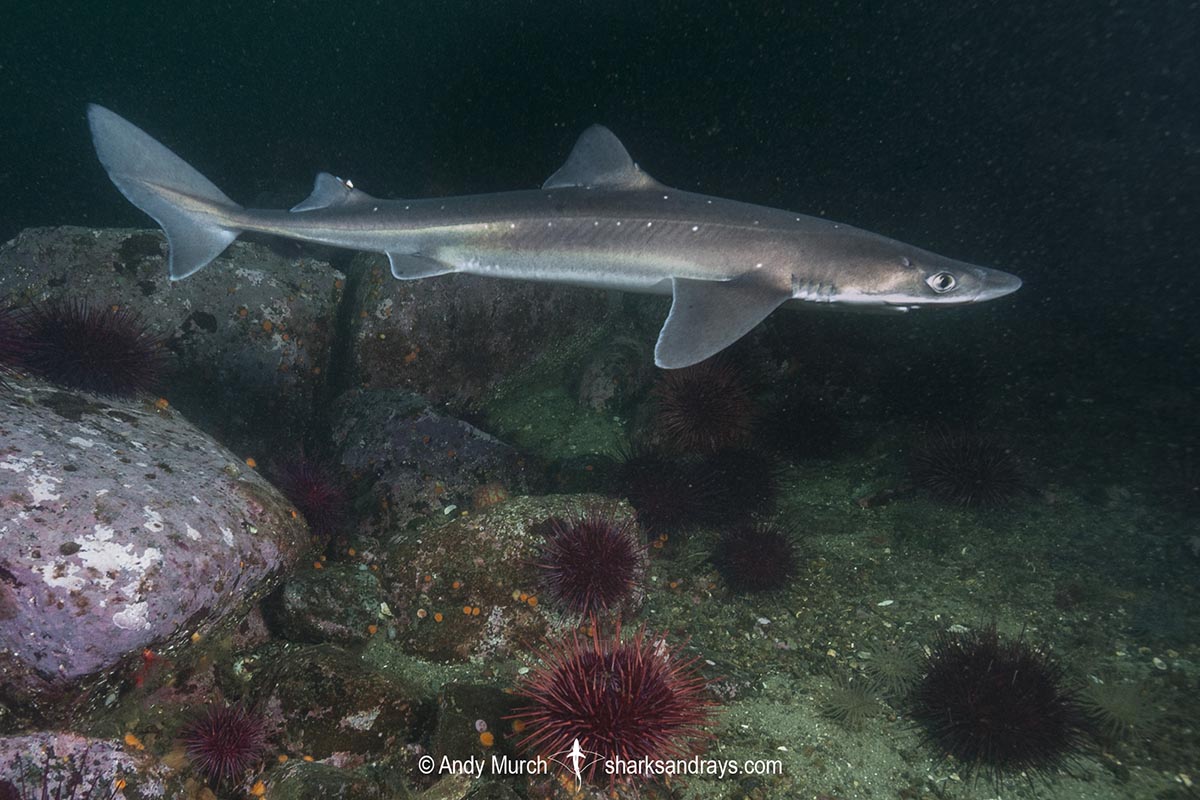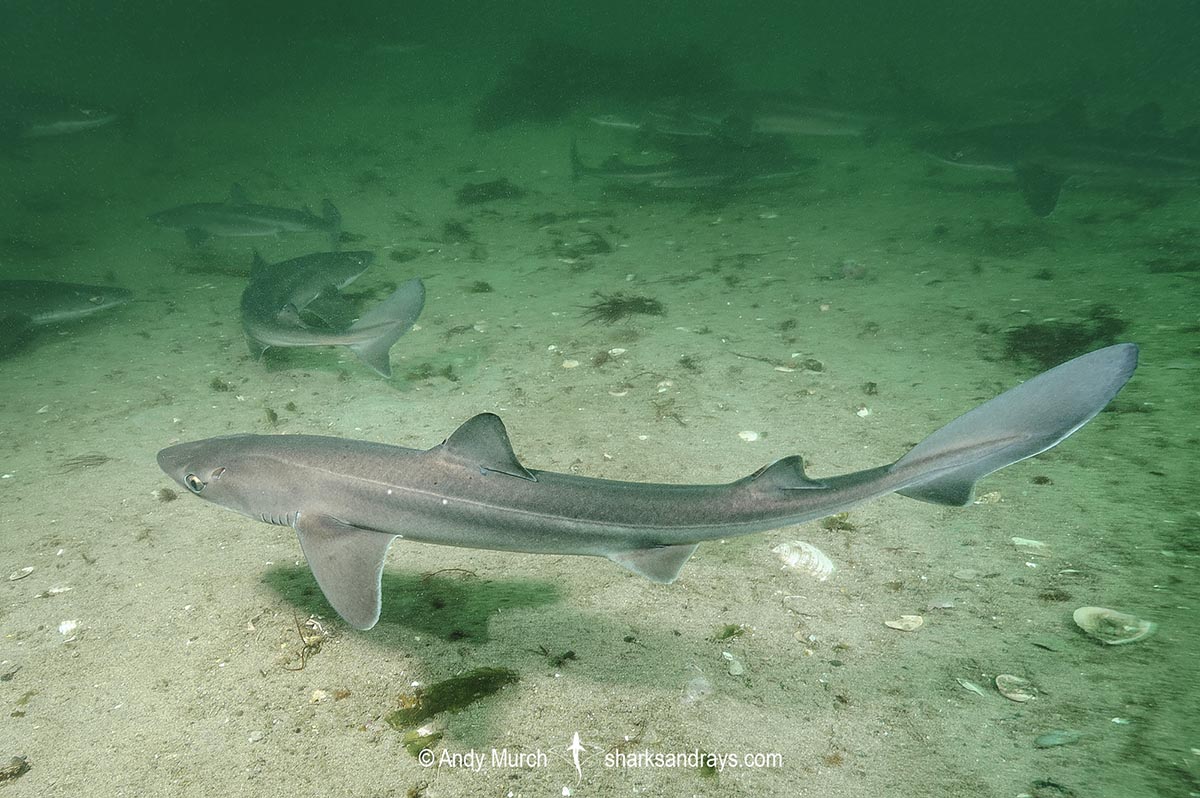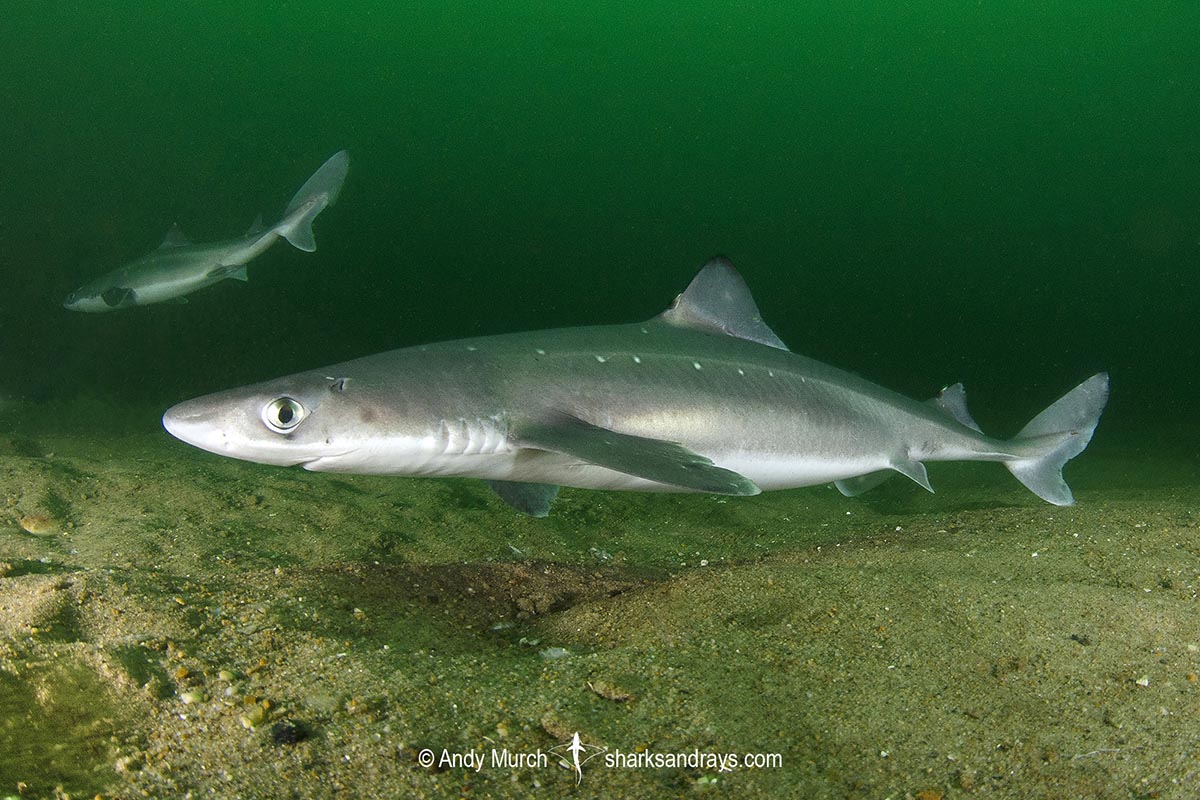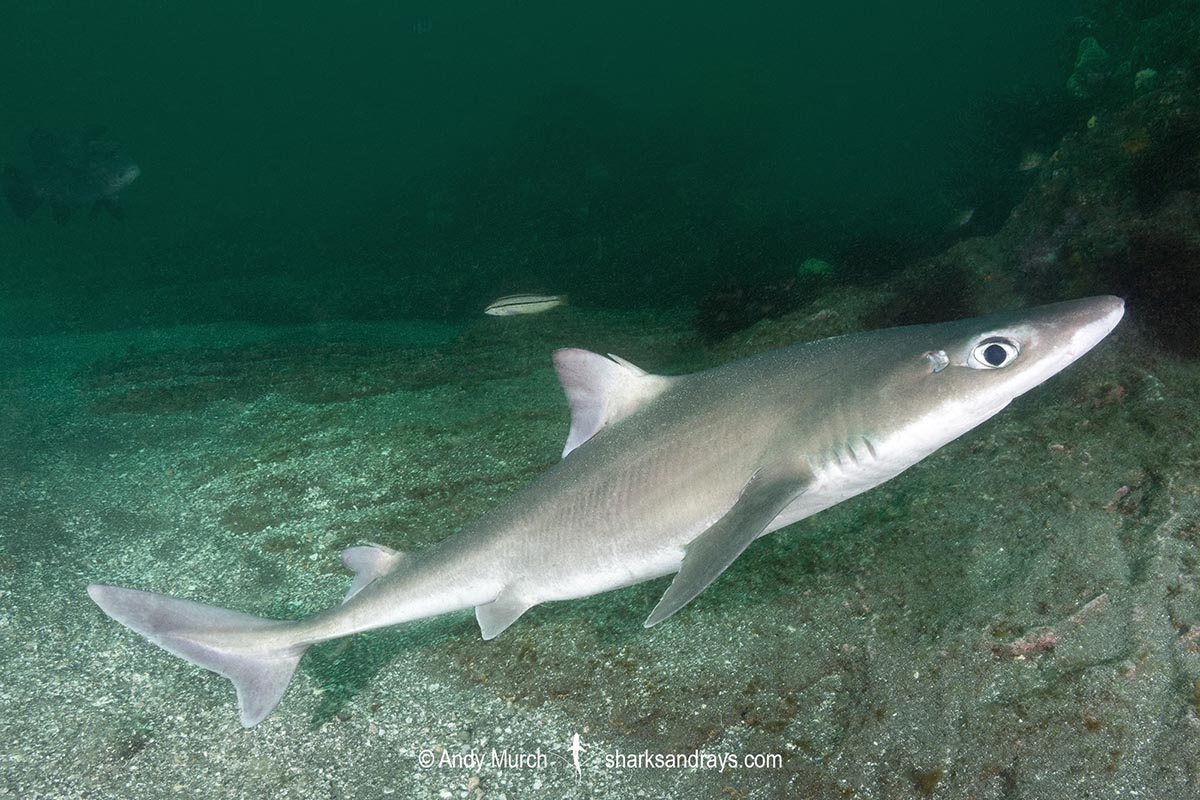Common names
Spiny Dogfish, , Piked Dogfish, Spurdog.
Binomial
Squalus suckleyi.
Synonyms
Acanthias suckleyi, Acanthias sucklii, Spinax suckleyi, Squalus sucklii.
Identification
A slender squaloid shark with a long snout, fairly large eyes, and a narrow anterior nasal flap. Snout length greater than mouth width. Two dorsal fins with short anterior spines. Second dorsal fin smaller than first dorsal. First dorsal fin origin posterior to free rear tip of pectoral fin. Second dorsal origin posterior to pelvic fin free rear tip. Pectoral fins have mildly concave posterior margins and rounded free rear tips. Anal fin absent. Pectoral fins broad with rounded free rear tips.
Dorsal coloration grey or greyish-brown, usually with a few small, white spots along lateral line and upper back. Ventrum pale. Tip of first dorsal and upper caudal lobe often dusky or black. Posterior margins of pectoral fins and caudal fin often pale.
Size
Maximum length 130cm. Size at birth 22-33cm.
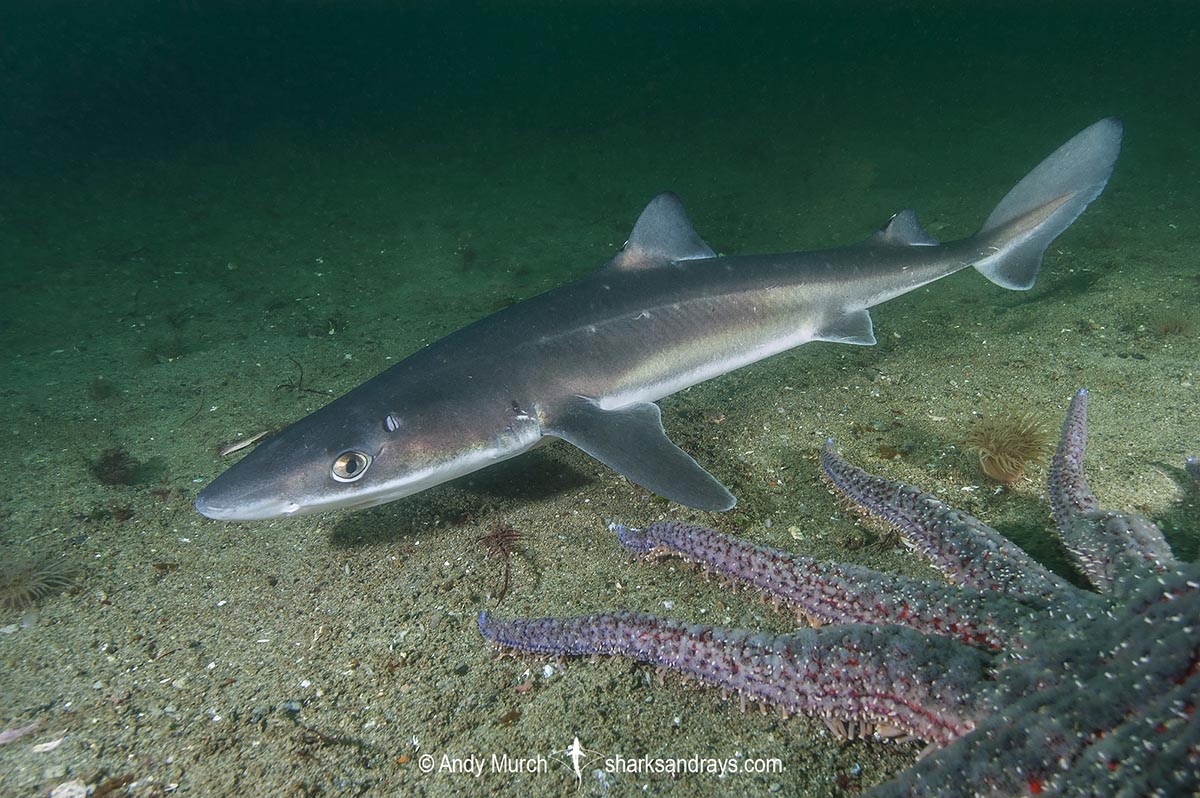
Conservation Status
LEAST CONCERN
There are small targeted fisheries for North Pacific Spiny Dogfish (Squalus suckleyi). Spiny dogfish have a late age at maturity and low reproductive capacity, leaving them vulnerable to over-exploitation.
The species segregates by size and sex. The habitat use of mature females makes them more susceptable to fishing by trawl and bottom longline. Some fisheries management exists, but since this species is highly migratory, localized measures are only partially effective.
The Northeast Pacific offshore stock is not considered to be overfished, and may be increasing. The Puget Sound inshore stock has been significantly depleted, but there is no longer intensive fishing in that area. In Alaska, Spiny Dogfish stocks appear to be increasing. The population in the Northwest Pacific seems to be fairly stable.

Habitat
A boreal to warm-temperate water species. Found in muddy or sandy bays, in channels of rocky reefs, and offshore along the continental and insular slopes. From the surface to 1,236m.
Distribution
The North Pacific spiny dogfish is found on both sides of the North Pacific Ocean. In North America it occurs from Baja, northwards to Alaska. In Asia it occurs from Eastern Russia, southward to Taiwan, including the Japanese archipelago.
Reproduction
An aplacental viviparous species. Litter size 2-12. Gestation ranges between 18-24 months.
Diet
North Pacific spiny dogfish are opportunistic feeders that consume a wide variety of bony fishes and invertebrates, and occasionally other elasmobranchs.
This species is known to form very large, dense feeding aggregations. Anecdotal reports from divers in the 1980s, tell of dogfish schools that would block out the sun and bring visibility down to zero, as the mass of animals moved through the area.
Behavior
North Pacific spiny dogfish undergo extremely long migrations. One tagged individual traveled 6500km across the Pacific.
Reaction to divers
Somewhat shy and difficult to approach, but may make close passes if curious. North Pacific spiny dogfish are extremely bold in baited situations, even wrestling for fish directed from divers’ hands.
Diving logistics
During the summer and fall, it is not unusual to see North Pacific spiny dogfish on the rocky reefs around Vancouver Island. Historically, the best place to see them was at Quadra Island where a fish processing plant would pump waste into the bay. This practice has been banned so dogfish numbers have diminished but a remnant population can still be found in that area.
Similar species
Spiny Dogfish Virtually identical in the field but separated by range. Distinguished by proportionately greater distance between pectoral fin insertion and pelvic fin origin.
Japanese Spurdog Distinguished by longer snout, lack of spots, and more posterior second dorsal fin.

